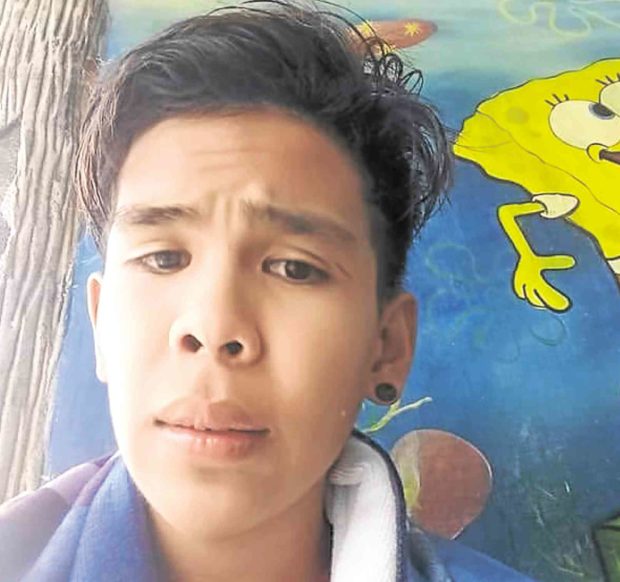PNP: Kian not shot at close range

Kian Loyd delos Santos’ photo from his Facebook account (left) and his school ID from last school year.
The Philippine National Police on Wednesday disputed the findings of an autopsy conducted by the Public Attorney’s Office (PAO) on Kian delos Santos, claiming the 17-year-old had only two gunshot wounds and not three.
The PNP Crime Laboratory (PNP-CL) said it was impossible for the teenager to have been killed execution-style simply because he was not shot at close range, although tests found no trace of gunpowder nitrates on Kian’s hands.
At a press briefing, Chief Supt. Aurelio Trampe said the autopsy on the teenager showed only two bullet wounds in the head, the entry wounds below the left ear and the other directly in the left ear.
‘No wound in back’
Trampe, the crime laboratory director, pointed out that, contrary to the findings of PAO medicolegal officer Erwin Erfe, there was no gunshot wound in the back.
“Based on the report there was no soot or stippling, which means he was shot from a distance,” according to PNP-CL medicolegal office officer in charge, Jane Monzon.
Soot is the black substance emitted by a fired gun while stippling or tattooing is an abrasion caused by hot powder from a fired pistol that sprays around the wound and burns the skin, Monzon explained.
Stippling only occurs when the barrel of a gun is less than 60 centimeters (approximately two feet) from the target.
“I assume that the barrel of the gun is more than 60 centimeters away from the victim,” Monzon said.
Already embalmed
She pointed out that while the PNP-CL got first dibs on the autopsy, ahead of the PAO, the teenager’s body was already embalmed.
Monzon clarified that it could not be immediately deduced from the result of the autopsy if the teenager was prone or supine when he was shot.
“If it is embalmed, there are a lot of limitations and sometimes you cannot really recognize an entry or exit wound,” she said.
Monzon was referring to the finding of a third gunshot wound by the PAO, which the PNP-CL could not explain.
Asked if the PAO conclusion that Kian was executed was definitive, Monzon said: “It seems impossible based on our report … There was no soot and stippling that would suggest that he was shot at close-range.”
The PAO claimed the teenager was shot behind the ear while lying prone, with his killer standing over him.
It said Kian was shot three times—first in the back then twice in the head—and pointed out that there was no indication that Kian had fought back.
PAO chief Persida Acosta said that the wounds indicated that the teenager was intentionally killed.
The PNP paraffin test appeared to validate the PAO findings that Kian had not fought back.
The PNP-CL test on the teenager’s hands yielded negative for any trace of gunpowder nitrate.
But Trampe said the fact that parrafin testing was done more than 72 hours after the incident could have affected the outcome of the examination.
A report from the PNP-CL also found that the 9mm service pistols of the three Caloocan policemen — PO3 Arnel Oares, PO1 Jeremias Pereda and PO1 Jerwin Cruz — as well as a .45 cal. pistol found at the scene had been fired.














